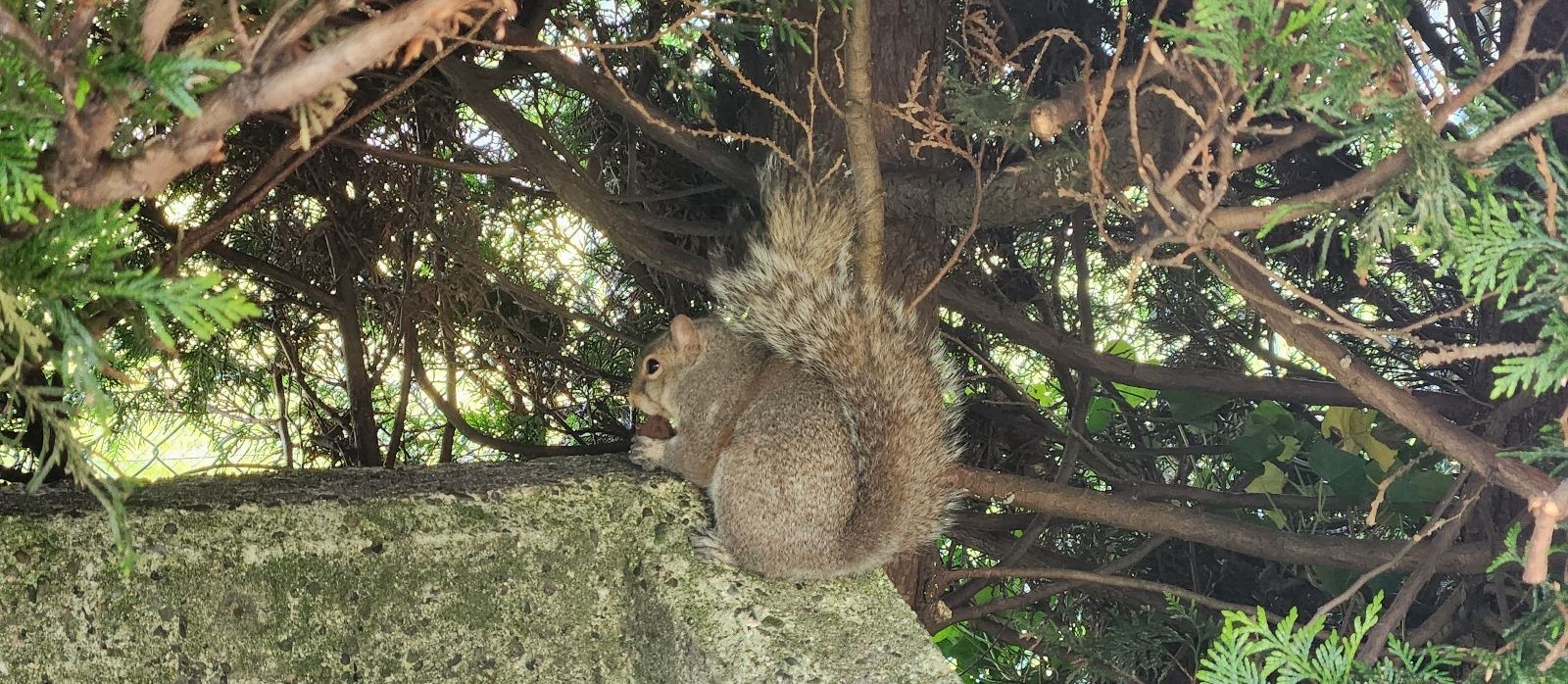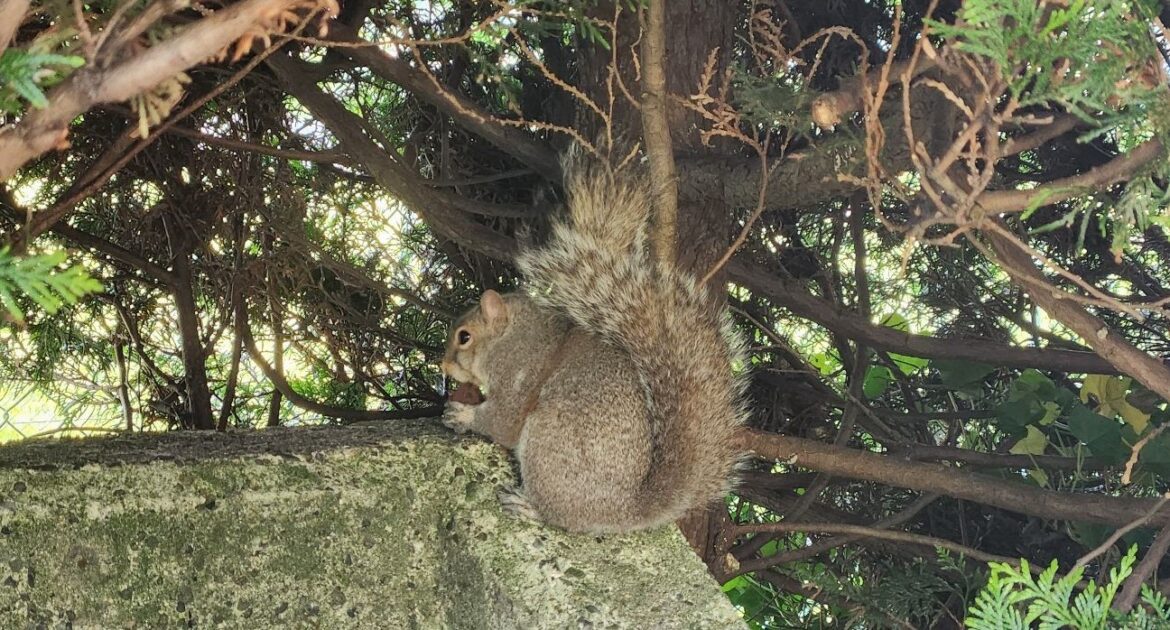If you’ve heard scratching noises in your ceiling during the day, chances are you’re not imagining things—you may have a squirrel problem. In Vinings and the greater Atlanta area, squirrel intrusions into attics are a growing issue, especially in neighborhoods with mature trees, older homes, and plenty of green space. But why do squirrels choose attics, and what can you do about it?
Squirrels nest in attics because they offer safe, warm shelter close to food sources and far from predators. Your attic provides the perfect nursery during Georgia’s two peak nesting seasons, and once they’ve found their way in, they won’t leave without a fight. Unfortunately, DIY removal methods rarely work, and worse, they can cause harm to both your home and the animals.
Here’s everything Vinings homeowners need to know about squirrel nesting behavior—and how Skedaddle Humane Wildlife Control provides safe, permanent, and humane solutions.
Why Homes Attract Squirrels
Vinings is known for its blend of natural beauty and upscale charm—large trees, manicured landscapes, and older homes that create the perfect environment for local wildlife. While these features make the neighborhood beautiful, they also make it highly attractive to squirrels.
Squirrels are natural climbers, and when mature trees or vines give them access to your roofline, they’ll often investigate for weak spots. Many homes, particularly those with aging roofs or decorative trim, are filled with easy access points.
🏠 Common Squirrel Entry Points in Homes
- Gaps between roof shingles and fascia boards
- Uncapped chimneys or roof vents
- Soffits weakened by moisture or rot
- Unscreened attic vents and fans
Once inside, your attic provides ideal conditions: warmth in winter, dry shelter during storms, and safe spaces for baby squirrels.
Getting to Know How Squirrels Nest
In Georgia, squirrels have two primary nesting seasons: late winter (February–May) and late summer to early fall (August–October). During these times, squirrels are especially determined to find a secure nesting site where they can give birth and raise their young.
In Vinings, the most common offenders are Eastern gray squirrels and Southern flying squirrels. Gray squirrels tend to enter through gaps along the roofline or chew their own entry points. Flying squirrels, more common than most people realize, sneak into attic spaces at night and are often heard gliding between trees and rooftops.
🐿️ Why Squirrels Love Attics:
- Quiet and undisturbed
- Consistently warm
- Safe from predators like hawks, owls, or neighborhood cats
- Close to food sources like bird feeders, gardens, and compost bins
Unfortunately, their presence leads to more than just noise. Squirrels chew electrical wires, damage insulation, and leave behind urine and feces, creating both a fire risk and a potential health hazard.
Signs You Have Squirrels in Your Attic
If you live in Vinings and suspect something is nesting overhead, squirrels may be the cause. They’re most active during the day, especially early morning and late afternoon, so timing can help distinguish them from nocturnal pests like raccoons or bats.
👂 What to Look (and Listen) For:
- Daytime scratching or scampering sounds in the walls or ceiling
- Chewed entry points around roof corners or vents
- Droppings, nesting debris, or insulation pushed into odd areas
- Pets acting unusually alert toward the ceiling or attic
Ignoring these signs can lead to worsening damage over time. The longer squirrels nest, the more material they gather and the more contamination they leave behind.
Why DIY Squirrel Removal Fails
While the internet is full of DIY squirrel removal tips, most of these methods are ineffective at best and dangerous at worst. Squirrels are territorial and persistent. If one method doesn’t work, they’ll just try another angle—sometimes chewing their way back in with even more force.
Problems with DIY Removal:
- Fails to locate and remove baby squirrels (leading to dead animals or return attempts by the mother)
- Temporary deterrents like noise makers or repellents don’t address entry points
- Improper handling can stress the animal or result in injuries
- Risk of fire or electrocution from tampering with wiring or insulation
More importantly, Georgia wildlife laws protect many animal species, including some squirrel species. Trapping or relocating without proper permits can be illegal and inhumane.
How Skedaddle Humanely Removes Squirrels from Homes
At Skedaddle, we’ve developed a proven, three-step humane process for squirrel removal that not only evicts current invaders but also prevents future ones.
✅ Our Process:
- Assessment – We inspect your attic, roof, and surrounding property to identify active entry points, signs of infestation, and any nests or offspring.
- Humane Removal – Using one-way doors, we allow adult squirrels to exit while preventing them from re-entering. If babies are found, we hand-remove and reunite them with their mother outside.
- Cleanup & Sanitation – We remove contaminated nesting materials, disinfect affected areas, and assess damage to insulation and wiring.
We seal all potential entry points with chew-proof materials and provide long-term prevention solutions tailored to your home. By safely removing squirrels and respecting their natural behavior, we protect your home while ensuring local wildlife can thrive in their natural environment, not yours.
Don’t Wait—Protect Your Home Before the Next Nesting Season
If you’ve noticed the signs or suspect squirrels in your attic, don’t wait until the damage becomes costly. DIY squirrel removal in Vinings might offer a temporary fix, but Skedaddle provides a permanent solution that keeps your home (and the animals) safe.
🔍 Why Choose Skedaddle for Squirrel Removal in Vinings?
- Over 30 years of humane wildlife removal experience
- Long-term results backed by industry-leading guarantees
- Proudly serving the Atlanta area, including Vinings and surrounding communities
Ready to take back your attic? Contact Skedaddle today to book your humane squirrel removal inspection and stop the noise, damage, and disruption—for good.




